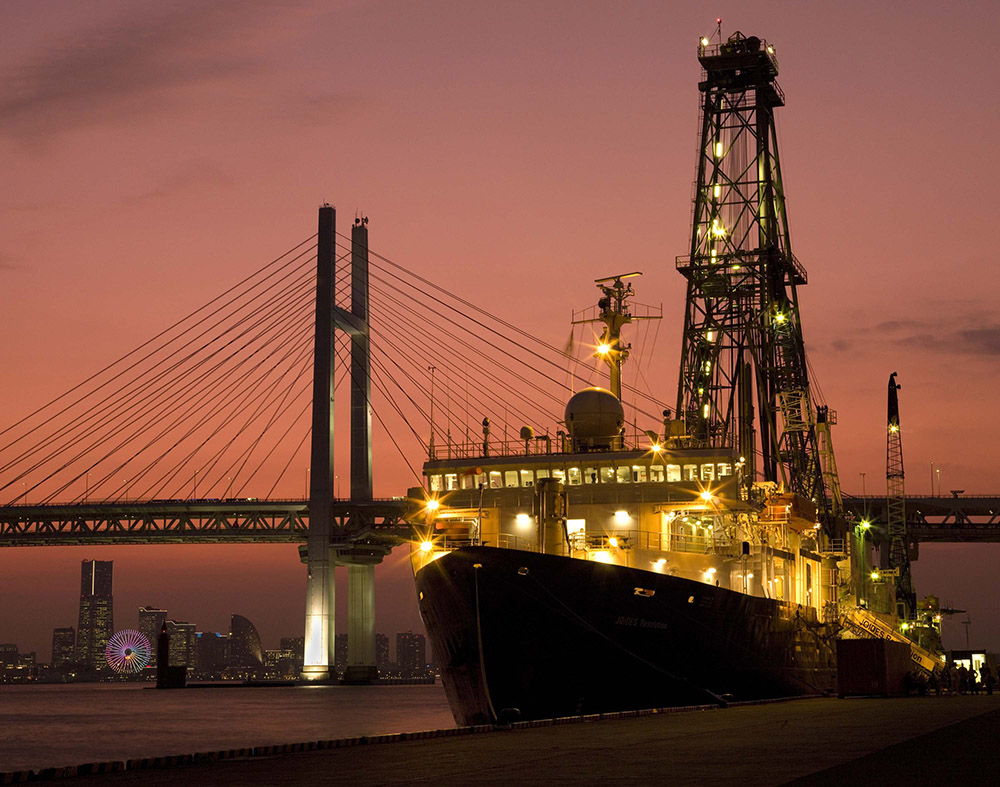JOIDES Resolution explores floor of Indian Ocean to study monsoons
Image: Texas A&M University
Texas A&M University’s research ship, the JOIDES Resolution, is on a series of three unique cruises over six months to study the history and development of the monsoon cycle. The journey will take it to the Indian Ocean while dozens of scientists analyze and collect data that should shed new light on monsoons and the weather they create.
Operated by A&M’s International Ocean Discovery Program (IODP), the ship recently sailed from Singapore where it docked to change crews and restock supplies before going to sea for the program’s next expedition.
“JOIDES Resolution is in the Indian Ocean to focus on the origin of the monsoon system and how it has changed through time,” IODP Director Brad Clement explained. “Monsoon rains provide freshwater for much of Southeast Asia, so understanding the natural variability of this weather system is important for addressing the water needs of this region.”
Scientists from 11 nations disembarked Jan. 29 in Singapore, while 31 scientists from Australia, Brazil, China, France, Germany, India, Japan, Korea, the United Kingdom and the United States boarded the ship to sail for the next two months to study changes in the monsoon cycle recorded in sediments of the Bengal Fan.
During the 30-year period that Texas A&M has served as science operator for the JOIDES Resolution, it has received funding in excess of $1.5 billion, with much of it spent in Texas. IODP headquarters are located in the Texas A&M Research Park.
Of federally funded programs that have successfully been carried out in Texas, only the Johnson Space Center in Houston has received more financial support than IODP, according to informal tabulations.
The cooperative agreement signed with the National Science Foundation (NSF) last year totals about $250 million, with the international community contributing another $87.5 million, subject to availability of funds and continued scientific priorities.
The International Ocean Discovery Program and its predecessors have led scientific ocean drilling worldwide since 1968. Currently, IODP has 26 international partners: the U.S., Japan, Austria, Belgium, Canada, Denmark, Finland, France, Germany, Iceland, Ireland, Israel, Italy, Netherlands, Norway, Poland, Portugal, Sweden, Switzerland, United Kingdom, P.R. China, Korea, Australia, New Zealand, Brazil and India. Israel joined as the newest member of the European Consortium in 2013.
The NSF has a long history with ocean drilling projects.
In the 1960s, the Deep Sea Drilling Project provided a test of the plate tectonic hypothesis and a basic reconnaissance of deep-sea sediments and crustal rocks. In 1983, Texas A&M became science operator for the Ocean Drilling Program, which focused on examination of Earth, ocean and climate processes. The Integrated Ocean Drilling Program began in 2003 and served as an expanded program of scientific ocean drilling until 2013.
While in Singapore, Texas A&M graduates and their families toured the ship. Visitors also included Earth Science faculty and students and journalism students from Nanyang Technological University. Clement addressed the group and outlined the ship’s history and many scientific achievements. Also speaking were Bob Houtman and Jamie Allan from the National Science Foundation, which funds the ship’s operations.
For more about the ship and the International Ocean Discovery Program, go to http://iodp.tamu.edu.
#TAMUresesarch


